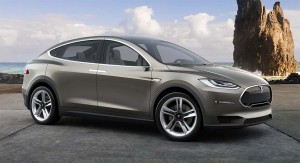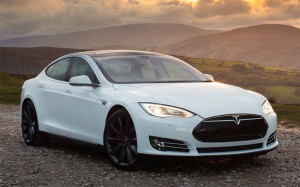Tesla is beaming a wireless update to some of its owners, expanding on the semi-autonomous features it recently introduced for its Model S sedan and Model X SUV.
Among other things, drivers will now be able to get out of their vehicles and remotely tell it to park, simply by pressing a button on the key fob or the Tesla smartphone app. At the same time, the maker is taking steps to slow down some owners who have been using the AutoPilot system to race through residential neighborhoods hands-free.
In such situations, or where there’s no center divider, “where there’s potential for a more serious collision,” said Tesla founder and CEO Elon Musk, “it makes sense not to go more than five miles per hour above the speed limit.”
Tesla introduced the AutoPilot system late last year, making it the first semi-autonomous, hands-free driving system available for use on public roads. Other automakers, including Mercedes-Benz, Cadillac, Nissan and BMW, hope to add similar technology within the next year or two.
(2017 Mercedes-Benz E-Class pushes autonomous envelope. For more, Click Here.)
The system has generated plenty of enthusiasm among both owners and proponents of autonomous driving, though reports that some motorists have been using the AutoPilot system more aggressively than intended has raised concerns – and apparently led Tesla to slow them down.
In typically high-tech fashion, Tesla released the AutoPilot system to about 60,000 vehicles – including both the new Model X and Model S sedans made after September 2014 – using a wireless communications network. It used the same system to propagate the new update.
Among other things, AutoPilot now will slow the vehicle down automatically when it approaches a sharp corner. And it introduces a more advanced self-parking system than the current version, which required a motorist to be sitting behind the steering wheel.
Going forward, what Musk said was “like remote-control parking” will allow a driver to exit the vehicle, press a keyfob button or use the smartphone app to get the vehicle to slide into a parking spot on its own.
(Click Here for details about Renault-Nissan plans for more than 10 autonomous vehicles by 2020.)
The vehicle itself must be within 33 feet of the parking space, and the driver no more than 10 feet from the car. But the goal is to eventually let a vehicle drop its passengers off, then go and find a spot on its own.
“I actually think, and I might be slightly optimistic on this, within two years you’ll be able to summon your car from across the country,” the South African-born Musk said. “This is the first little step in that direction.”
Several other makers are developing similar auto-park systems, including BMW and Ford Motor Co.
Such technology is seen as a precursor to the goal of delivering fully autonomous vehicles. The Renault-Nissan Alliance this past week said it plans to introduce that technology on “at least 10” vehicles by 2020. It plans to roll out a series of ever more capable semi-autonomous systems before then – and a number of competitors plan to follow a similar path.
(To see more about Volvo making its semi-autonomous features standard on the S90, Click Here.)
For his part, Musk said he is “highly confident” Tesla can find a “technological solution” to get its own fully-autonomous vehicles on the road within 24 to 36 months. And he said he believes they will reach “a safety level significantly better than a human.”



Thanks! Good report.
Wait until they start having software installation and programming issues. Oh, wait they already have. “It’s prudent to not exceed the speed limit by more than 5 mph in neighborhoods without divided streets”. Really? Duh.
Hand’s free is not intended to mean braindead drivers.